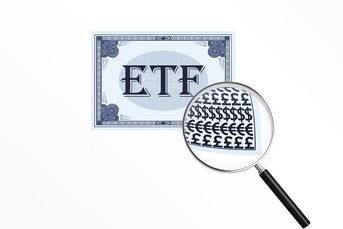Not all strong dividend ETFs are the same
Two top-ranked iShares Core exchange-traded funds are both cheap, but their holdings and exposure are quite different.
With the yield on the 10-year Treasury bond remaining near the 2014 low point, it’s reasonable to look for alternative income-generating securities such as dividend-focused exchange-traded funds. However, there are several dozen such ETFs to choose from, including multiple ones from the same ETF provider.
In June, iShares expanded its Core ETF series by 10 additional funds, doubling the total number it offers. The appeal of these newer ETFs is low expense ratios — ranging from 0.09% to 0.14%, depending on the investment style. That allows advisers to build well-diversified yet tactically tilted portfolios. The new styles include regional-specific international (Europe and Asia) and U.S. mortgage bonds and dividends. Meanwhile, some existing ETFs were renamed and expense ratios lowered.
One such renamed ETF is iShares Core High Dividend (HDV), which has more than $4 billion in assets. The ETF is one of the lowest-risk dividend ETFs in our universe, with a three-year beta (vs. the S&P 500) of just 0.48. HDV has relatively high exposure to traditionally defensive sectors such as consumer staples (24% of assets), health care (19%), utilities (12%) and telecom services (11%), and limited exposure to some economically sensitive sectors such as industrials (1%) and consumer discretionary (4%). This should not be a surprise since constituents that enter the index, and thus the iShares ETF, consistently have an above-average dividend yield and the defensive sectors tend to have many such candidates.
HDV has approximately 75 holdings, the majority of which have above-average S&P Capital IQ Quality Rankings and investment-grade credit ratings from Standard & Poor’s Ratings Services. Examples include Johnson & Johnson (JNJ) and Procter & Gamble (PG) that have above-average 2.7% and 3.1% dividend yields, respectively. The ETF’s top 10 holdings make up 59% of assets.
Aided by our similar holdings- and cost-factor-driven ETF research, S&P Capital IQ is already ranking these new iShares ETFs less than three months after their launch.
For example, we have an overweight ranking on iShares Core Dividend Growth ETF (DGRO) that launched in mid-June and has $55 million in assets. Unlike HDV, which focuses on the yield of potential candidates, as its name suggests, DGRO constituents are screened based on recent dividend growth and sustainability of such growth. In light of this, relative to HDV, DGRO offers higher exposure to industrials (16% of assets), information technology (14%) and consumer discretionary (13%) and lower exposure to defensive health care (10%) and utilities (6%).
(See also: How to use ETFs in portfolio construction)
DRGO has three times the number of holdings (approximately 270) as HDV with just 28% of assets tied to the top 10 holdings. While there are a limited number of holdings that overlap, such as JNJ, the weightings in such stocks are quite different. DGRO also is ranked favorably by S&P Capital IQ in part for the strong S&P Capital IQ Quality Rankings and Credit Ratings on its holdings.
Among the holdings are CSX (CSX) and VF Corp (VFC). CSX yields just 2.1% but raised its dividend 7.5% in July. Meanwhile, VFC’s below-average 1.6% yield is offset by the late-2013 dividend increase of 21%. Both stocks are considered undervalued by S&P Capital IQ’s equity analytical team.
According to iShares, using Bloomberg information, in late August, HDV’s dividend yield of 3.5% was much higher than the 2.3% for DGRO. However, the one-year dividend growth rate for DGRO’s holdings is 13%, which is almost double the 6.8% for HDV. The median market capitalization of HDV’s holdings of $15 billion is almost double that of DGRO.
Both iShares ETFs earn top rankings from S&P Capital IQ in part based on their holdings, but the appeal of them is quite different. For advisers and investors concerned that with the S&P 500 at record levels, a near-term pullback is possible, the higher-yielding, more defensive iShares Core High Dividend might be worthy of attention. However, for those who believe that U.S. economic growth is poised to improve in late 2014 and into 2015, and are concerned that interest rates will move higher, iShares Core Dividend Growth ETF might make more sense. Despite its young age and lower yield, it has greater exposure to sectors and stocks that can benefit more an improving economic cycle.
To be sure, these two ETFs are not the only dividend-focused ETFs tied to other indexes that earn S&P Capital IQ overweight rankings. Others include: SPDR S&P Dividend (SDY), Vanguard High Dividend Yield (VYM) and WisdomTree LargeCap Dividend (DLN).
Todd Rosenbluth is director of ETF research at S&P Capital IQ.
Learn more about reprints and licensing for this article.






